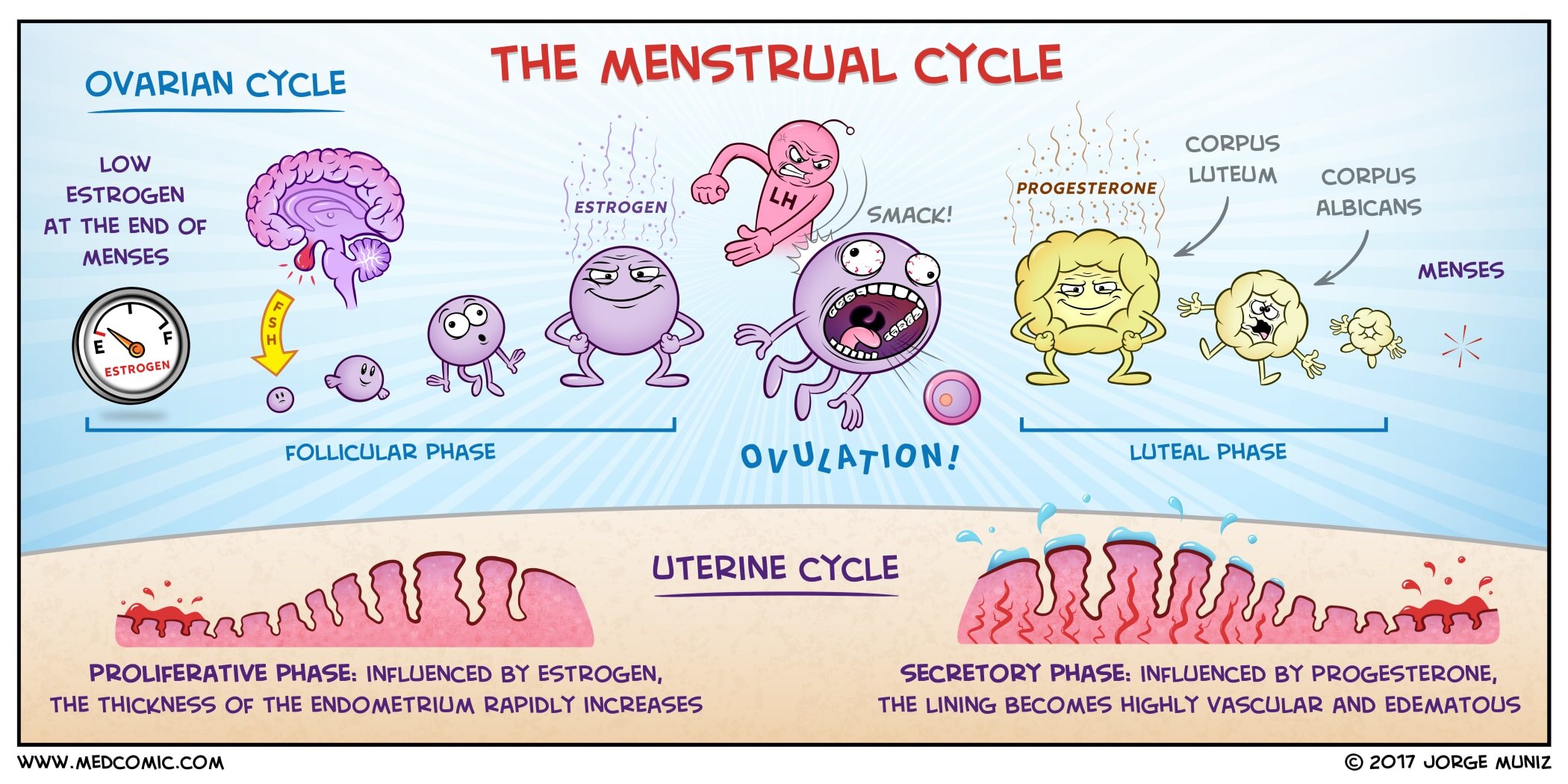The Menstrual Cycle
The menstrual cycle is coordinated by a series of hormones that regulate the growth of the endometrium, the development of an oocyte, release and possible implantation of an ovum, and if pregnancy does not occur, sloughing of the endometrium and menses to allow a repeat of the same process. The first day of the menstrual cycle is represented by the first day of menses. The menstrual cycle is then divided into the follicular and luteal phases of the ovarian cycle, which correspond with the proliferative and secretory phases of the uterine cycle.
The follicular phase is initiated by low estrogen levels at the end of menses. Follicle-stimulating hormone (FSH) from the anterior pituitary stimulates the follicles in the ovary to grow and produce estrogen. This stage roughly corresponds with the proliferative phase of the uterine cycle, in which the thickness of the endometrium rapidly increases. The dominant follicle (Graafian follicle) emerges by day 7 and as estrogen continues to increase it inhibits the release of FSH. Luteinizing hormone (LH) surges mid-cycle in response to peak amounts of estrogen from the mature follicle. One ovum is released 36 to 42 hours from the onset of the LH surge.
The luteal phase is so named because it centers on the activity of the corpus luteum, the remnant of the ovarian follicle, which secretes progesterone to ready the uterus for a possible pregnancy. This stage roughly corresponds with the secretory phase of the uterine cycle, in which the lining of the uterus becomes highly vascular and edematous. If the egg is not fertilized, the corpus luteum involutes and becomes the corpus albicans (fibrous scar tissue) and menstruation occurs.
